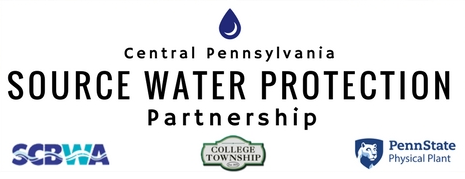Threats to source water
Pollution
The traditional image of pollution often involves a flow of toxic green sludge from the end of a pipe, or a cloud of smog forming at the top of a smokestack. These localized and readily identifiable sources of pollution, called point sources, are relatively easy to monitor and address. In contrast, data have shown that the real threat to source water in our area comes from non-point sources*. Pollution from non-point sources is generated over a distributed area, which often confuses efforts to identify the source of the contamination and makes it more difficult to manage. Common examples include agricultural runoff and excess salt and gravel from winter road maintenance.
We are fortunate to live in an area that supports a great and growing diversity of activities and stakeholders. Unfortunately, this also means there are many different potential sources of pollution, both point and non-point including (but certainly not limited to):
- Deicing chemicals and other highway runoff
- Aside from the compounds used for routine maintenance of our roadways, there is also risk associated with spills from accidents involving large trucks and tankers.
- Agricultural compounds (fertilizers, herbicides, pesticides)
- We are fortunate to live in a productive valley, but the many products utilized by agricultural operations can percolate through the soil and contaminate the groundwater.
- Failing septic and storage tanks
- Both residential and commercial property owners must be vigilant to ensure that all tanks are structurally sound and not leaking waste or chemicals into the groundwater.
- Stormwater runoff, including sediment and bacteria
- During intense precipitation events, run-off and flood waters collect compounds residing on roadways and other surfaces, and have the potential to transport them into the aquifer.
- Chlorine (from drinking water and pools)
- Treated water that is not disposed of properly can carry high levels of chlorine into the aquifer, which has negative ramifications for wildlife.
Complicating matters are the direct connections that features associated with karst geology create between surface water and groundwater. Although these make our aquifers very productive, they also make them vulnerable to the numerous pollutants mentioned above. Without the natural filter provided by soil, water that collects unwanted materials is able to carry these directly into our aquifers. In addition, water in karst systems moves much more easily than in other groundwater systems (100s to 1000s of feet per day), meaning that anything that is carried into the aquifer has the potential to be transported over great distances relatively quickly. This is why source water and wellhead protection are so vitally important in the State College area.
Groundwater mining
With so many households and businesses utilizing groundwater in the State College area, there is some concern that the supply will not be able to meet growing demand. Although this is not currently an issue that is likely to prove substantial, it could be a growing problem in the future as local population numbers continue to rise. Development associated with this population expansion places more impervious surface on the landscape, which prevents precipitation and run-off from infiltrating the soil and replenishing the groundwater supply. If enough impervious surface is placed on the landscape, then the aquifer may not refill quickly enough to match the rate at which water is being withdrawn. This results in "groundwater mining", or a net withdrawal of water from the aquifer, which can eventually deplete supplies to the point where they are no longer usable**. Again, although this is not a concern in our area presently, we must continue to be vigilant to ensure that we do not overtax our groundwater resources moving forward.
*State College Borough Water Authority ** "A Quick Guide to Groundwater in Pennsylvania", Penn State


